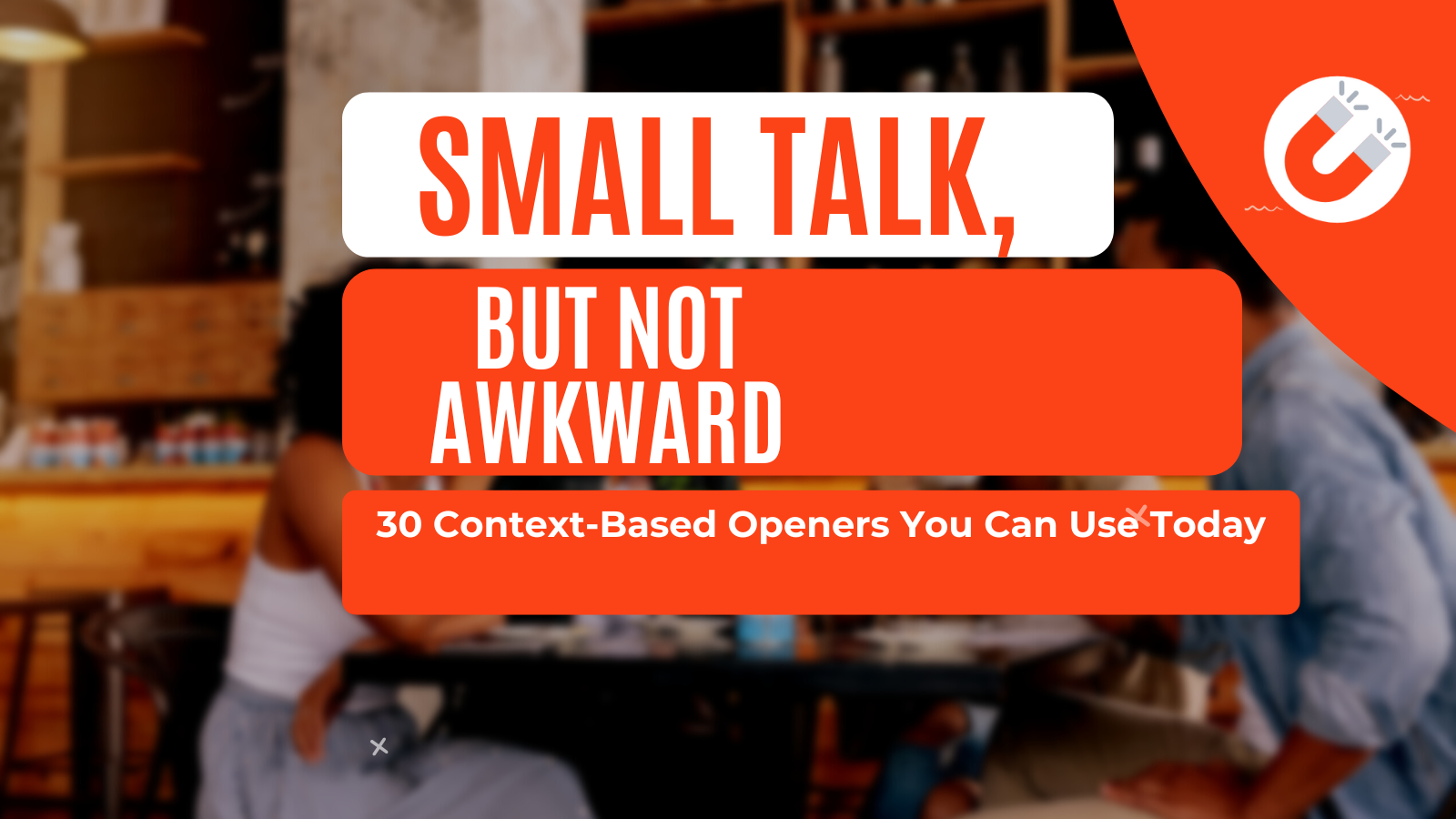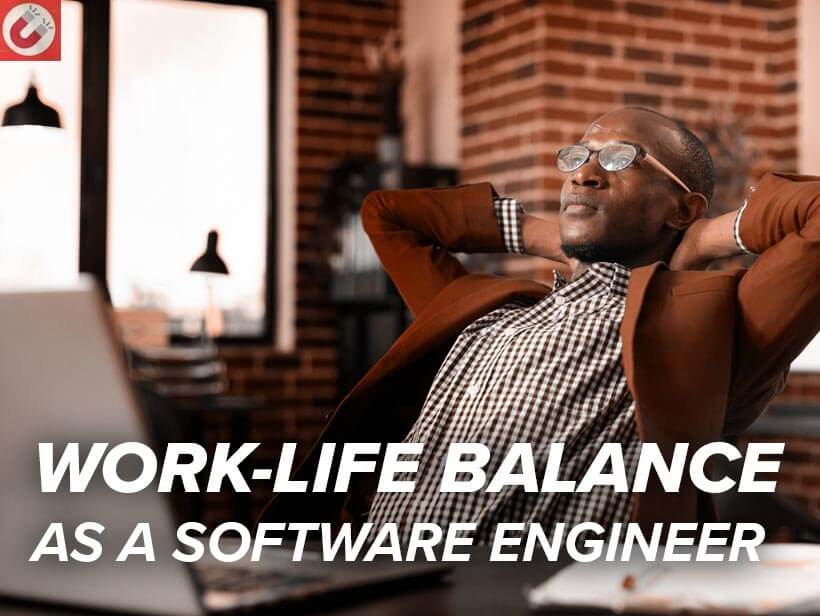Small talk isn’t fake…it’s a bridge.
Quick, light conversations lift mood, create belonging, and open doors to real connection. The trick is to make it feel natural and contextual, not random.
The 3 rules for not-cringey small talk
Use the room. Start with something you both can see or share (the event, the drink menu, the workout). Open questions invite stories; closed questions help you clarify and move forward.
Follow once, then share. Ask one follow-up about what they just said. Then add a short detail about yourself to keep it balanced.
Show you’re listening. Mirror a phrase they used or paraphrase before your next question. People relax when they feel heard.
30 context-based openers (with quick mini-drills)
A) Networking events & conferences
“What session surprised you most so far?”
“I’m torn between X and Y, did you catch either?”
“If someone’s new to this industry, what would you tell them to skip vs. double down on?”
Mini-drill: Ask one follow-up (“What made it surprising?”) then share your 10-second takeaway.
B) Work meetings & cross-team standups
“What’s the simplest version of what your team is shipping this sprint?”
“What usually blocks progress for you, and what unblocks it?”
“If this went perfectly, what would be different a month from now?”
Mini-drill: Reflect one phrase they used (“blocks progress”) before your next question.
C) Coffee shops & lines
“You look like a regular here, what do people order here when they want something not sweet?”
“Cold brew or drip…what’s your move?”
“If you renamed one drink here, what would you call it?”
Mini-drill: End with a light share (“I always regret ordering sweet before noon.”)
D) Gyms & classes
“Is there a form cue that helped you with this movement?”
“What’s your ‘even on low-sleep I still show up’ routine?”
“If the playlist were yours, first three tracks?”
Mini-drill: Mirror a keyword (“so the breathing cue made the difference?”) before your next question.
E) Parents at parks & school pickup
“What’s your kid been into this week?”
“Any local spots your family loves for a quick hour?”
“What’s your rainy-day save?”
Mini-drill: Offer one helpful share back (one playground, one rainy-day idea).
F) Weddings & social gatherings
“How do you know the couple?” (Classic because it works.)
“What’s the story behind your best wedding dance song?”
“If you were emceeing, what’s one line you’d use?”
Mini-drill: After one follow-up, introduce someone nearby to create a three-way chat.
G) Elevators, rideshares, quick moments
“On a scale of 1–10, how’s this week treating you?”
“If you could teleport anywhere after this meeting, where?”
“What podcast would you recommend for a 15-minute walk?”
Mini-drill: Keep the whole exchange under 20 seconds. Lead with a warm, eye-smile.
H) Neighbors & community
“What’s one thing you wish you knew sooner about this block?”
“Is there a local event you never miss?”
“Best low-key food within 10 minutes?”
Mini-drill: Close with an easy next step (“If you ever need X, knock on #12.”)
I) Classes & learning spaces
“What made you sign up for this topic?”
“If you could fast-forward and already know one skill from today, which?”
“What would make this session feel like a win for you?”
Mini-drill: Summarize their answer in one line before adding your perspective.
J) First dates & friendly intros
“What’s a low-effort thing that always improves your week?”
“If your city had a starter pack, what 3 things go in it?”
“What’s something you’re curious about this month?”
Mini-drill: Ask one follow-up, share one detail, then pivot to a plan (“Want to test that taco place next week?”)
Micro-skills that make any opener land better
Warm first beat. A real smile and relaxed posture do more than a perfect line.
Open vs. closed. Use open questions for stories; closed ones to clarify or move forward.
Reflect, then ask. Paraphrasing signals care and lowers defensiveness.
One-follow-up rule. Follow once, then share as it keeps momentum and prevents interrogation vibe.
Practice inside this article (free)
Want reps without awkwardness? Use the embedded Small-Talk Weave practice tool below: type an opener, get a reply, and see a suggested follow-up. Do three quick reps before your next event.
Next step: turn small talk into real connection
Train live with us: Try the Jaunty Gym—short, instructor-led sessions with real practice and feedback.
Go deeper: Join the 6-Week Social Skills Masterclass for a structured, high-accountability reset.
FAQ
Isn’t small talk fake?
It’s a low-stakes bridge. Even brief chats can boost mood and belonging. You can stay light or naturally transition to real topics.
How do I avoid sounding scripted?
Anchor to the context you both share, ask one follow-up, then add a short personal detail.
What if they’re not chatty?
Switch to a closed question, appreciate any answer, and exit kindly (“Great chatting, have a good one!”)



